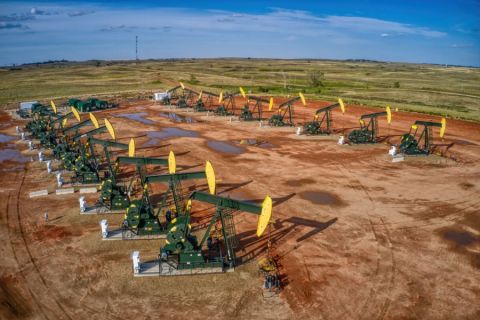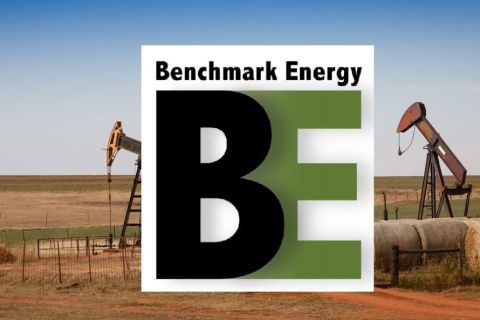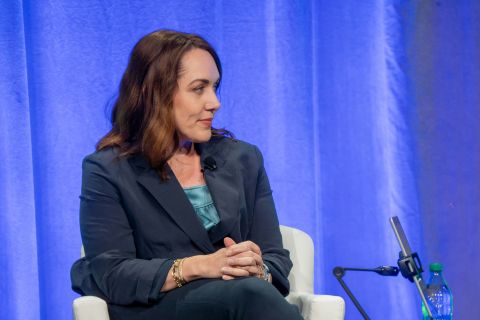
Companies in the oil and gas industry are embracing the digital revolution, looking for and finding ways to improve efficiency, grow revenue and create new business opportunities using digital technologies. (Source: Shutterstock.com)
HOUSTON—The energy industry has amassed tons of data from its upstream operations via sensors on equipment with data accessible through the cloud, but it’s how the data is used that adds value, according to speakers at a recent digital technology event.
Equinor (NYSE: EQNR), formerly known as Statoil, and Royal Dutch Shell (NYSE: RDS.A) were among the companies sharing insight on their digital technology efforts and strategy during UNIFY 2018, a digital-focused event put on by Baker Hughes, a GE company (NYSE: BHGE).
Norway’s Equinor is betting on digitalization to help it not only improve safety and reduce its carbon footprint of its operations, but also increase revenue by $2 billion, reduce offshore drilling costs by about 15%, lower future investment by about 30% compared to traditional oil and gas development and improve safety performance among other goals, according to Torbjørn Folgerø, chief digital officer for Equinor.
“We are creating one subsurface data platform. … We see great potential to both increase the quality of the exploration portfolio but also to get more out of existing reservoirs,” Folgerø said.
In the U.S., where Equinor has operated assets in the Eagle Ford, Bakken and Marcellus, the company is streaming data from more than 1,150 onshore wells at its remote operations center in Austin, Texas, to predict which wells could go down and sending in crews where it matters most, Folgerø explained. The system is code-based and aggregates data from several different systems.
“By using this tool we gather a lot of analytics for field learning,” Folgerø said.
Knowledge and digital techniques gained here could be used at the company’s integrated operations support and drilling operations centers—set to open this year—that aim to improve production and efficiency on Equinor’s Norwegian Continental Shelf (NCS) assets. The company has said the centers will connect to all of its NCS installations to enable more proactive decision-making by better utilization of operating data and digital technologies.
More than 26 petabytes are stored in Equinor’s data centers, the company said on its website. Folgerø said the amount of data has increased by more than 5 petabytes since 2012.
“This is raw data from our reservoirs, integrated data, equipment data from more than 40 operated assets on the Norwegian Continental Shelf,” he said. “This data is not valuable [by itself] not until applied with a purpose. Combining all this data and learning across our disciplines provide us with a better basis for decision making and creating new business opportunities.”
Equinor is not alone in its digital journey.
Mike Curtin, vice president of capital projects for Shell Oil, talked about the company’s three-pronged digitalization approach that focuses on digitizing the existing business; adjacency, which involves how digital opens opportunities in areas similar to the company’s existing business; and new business models, focused on finding new value propositions for customers and looking at new energies.
“Digital is nothing new. …It’s always been run on zeros and ones,” Curtin said. “It’s not a one-off thing. … We’ve got to give meaning to the hype.”
Digitalization, he said, has typically been thought of in terms of how business is conducted and how it can be done better. The growing trend, he added, focuses on how it is going to change the business.
Curtin used the retail segment for example and the challenge of getting energy to consumers in new ways as the energy market becomes more electrified. Analytics is playing a role in helping Shell understand what its customers want, he said.
“In the adjacency model of retail we’re looking at new ways to get gasoline to our consumers in a different way,” Curtin said. The company plans to roll out a service in some parts of the world that allows cars to be refueled as they sit in parking lots, he said.
Upstream, Shell—like many others—relies on oilfield service companies to help provide solutions. Shell has utilized BHGE’s JewelSuite reservoir and well modeling software. It is known within Shell as PetroScience. The software allows the company to increase collaboration to better make decisions about reservoirs, Curtin said.
BHGE described JewelSuite on its website as software that “supports and provides integrated upstream workflows that promote the transfer of knowledge and quantified uncertainty between oil and gas disciplines.” It gives teams the ability to “utilize new, near- and real-time data inputs and analytics to accelerate and optimize field development plans, drilling operations and production.”
“It seems like a very simple concept but the challenges of scale, focusing on important data, making the things that should be easy to do, getting people out of the business of moving data from one platform to another and freeing them up to actually make some decisions is hugely valuable,” Curtin said.
Like other companies, Curtin acknowledged that sometimes the challenge is around getting started on digital initiatives, moving from the novelty of a new technology to a business-centered approach. To assist in this regard, Shell formed “accelerators” aimed at driving big ideas in an agile way, learning how to scale and quickly rebound from failures, he said.
The intent is to have an outcome-focused approach.
Equinor’s Folgerø added that it’s also important to ask the right questions and know the purpose of data.
“Data can provide you with an extreme amount of answers but that doesn’t really help if you don’t know what to ask for and what to search for,” he said.
Velda Addison can be reached at vaddison@hartenergy.com.
Recommended Reading
EIA: Permian, Bakken Associated Gas Growth Pressures NatGas Producers
2024-04-18 - Near-record associated gas volumes from U.S. oil basins continue to put pressure on dry gas producers, which are curtailing output and cutting rigs.
Benchmark Closes Anadarko Deal, Hunts for More M&A
2024-04-17 - Benchmark Energy II closed a $145 million acquisition of western Anadarko Basin assets—and the company is hunting for more low-decline, mature assets to acquire.
‘Monster’ Gas: Aethon’s 16,000-foot Dive in Haynesville West
2024-04-09 - Aethon Energy’s COO described challenges in the far western Haynesville stepout, while other operators opened their books on the latest in the legacy Haynesville at Hart Energy’s DUG GAS+ Conference and Expo in Shreveport, Louisiana.
Mighty Midland Still Beckons Dealmakers
2024-04-05 - The Midland Basin is the center of U.S. oil drilling activity. But only those with the biggest balance sheets can afford to buy in the basin's core, following a historic consolidation trend.





